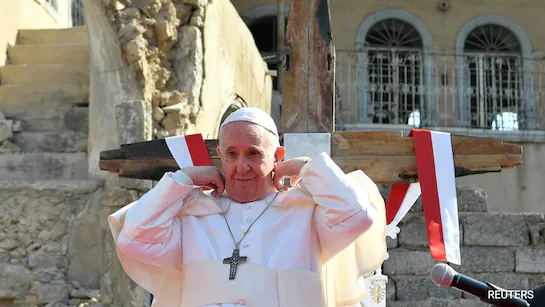
A shift from centuries-old secrecy
Discussing the pope’s health was considered a major taboo within the Vatican for centuries. As the spiritual leader of 1.4 billion Catholics, the pope was often viewed as a revered figure whose physical ailments were rarely acknowledged. However, with Pope Francis currently hospitalized due to double pneumonia, the Vatican has taken an unprecedented step toward transparency.
Daily health updates mark a new era
Since February 14, Pope Francis has been receiving treatment at Rome’s Gemelli Hospital. In a significant departure from tradition, the Holy See press office has been providing daily updates on his condition. These updates have included specific details such as the pope’s use of high-flow oxygen, his need for blood transfusions, and a prolonged asthma-like respiratory crisis on February 22.
Veteran Vatican journalist Greg Erlandson remarked, “I’ve been cautiously impressed. The updates help build trust that we are getting a fairly accurate summary of the pope’s condition.” Similarly, John Thavis, who has covered multiple papacies, noted that this openness aligns with Pope Francis’ communication style but represents a break from the Vatican’s traditionally reserved approach to papal health matters.
Pope Francis’ personal push for openness
Reports suggest that Pope Francis himself ordered these detailed updates. At a press conference on February 21, Dr. Sergio Alfieri of Gemelli Hospital confirmed that the pope instructed his medical team to provide updates “without withholding anything.”
A source close to the pope further revealed that Francis actively participated in drafting some of the first updates from his hospital bed, pushing for more transparency about his condition and treatment. According to Thavis, “Francis wanted the gravity of his condition made clear.”
Combating misinformation
While Vatican officials have not explicitly stated their reasons for this new approach, insiders suggest that one major motivation is the need to counter misinformation. Shortly after Pope Francis was hospitalized, false reports began circulating on social media, claiming he had died or received last rites. Additionally, AI-generated images falsely depicted him on a ventilator, further fueling speculation.
Jesuit priest and papal commentator Tom Reese observed, “The Vatican has finally learned that it is better to be forthcoming than to let conspiracy theorists fill the void.”
A historical shift in Vatican communication
Historically, papal illnesses were either downplayed or kept entirely secret. Pope John Paul II, who led the Catholic Church from 1978 to 2005, exhibited visible tremors for years before the Vatican finally confirmed in 2003 that he had Parkinson’s disease. Similarly, Pope John XXIII’s stomach cancer, which afflicted him for at least eight months, was only revealed after his death in 1963.
“The old saying was that the pope’s never sick until he’s dead,” said historian Christopher Bellitto of Kean University. “That’s changed.”
This newfound transparency marks a significant shift in how the Vatican communicates about papal health, signaling a new era of openness in an institution known for its secrecy.






